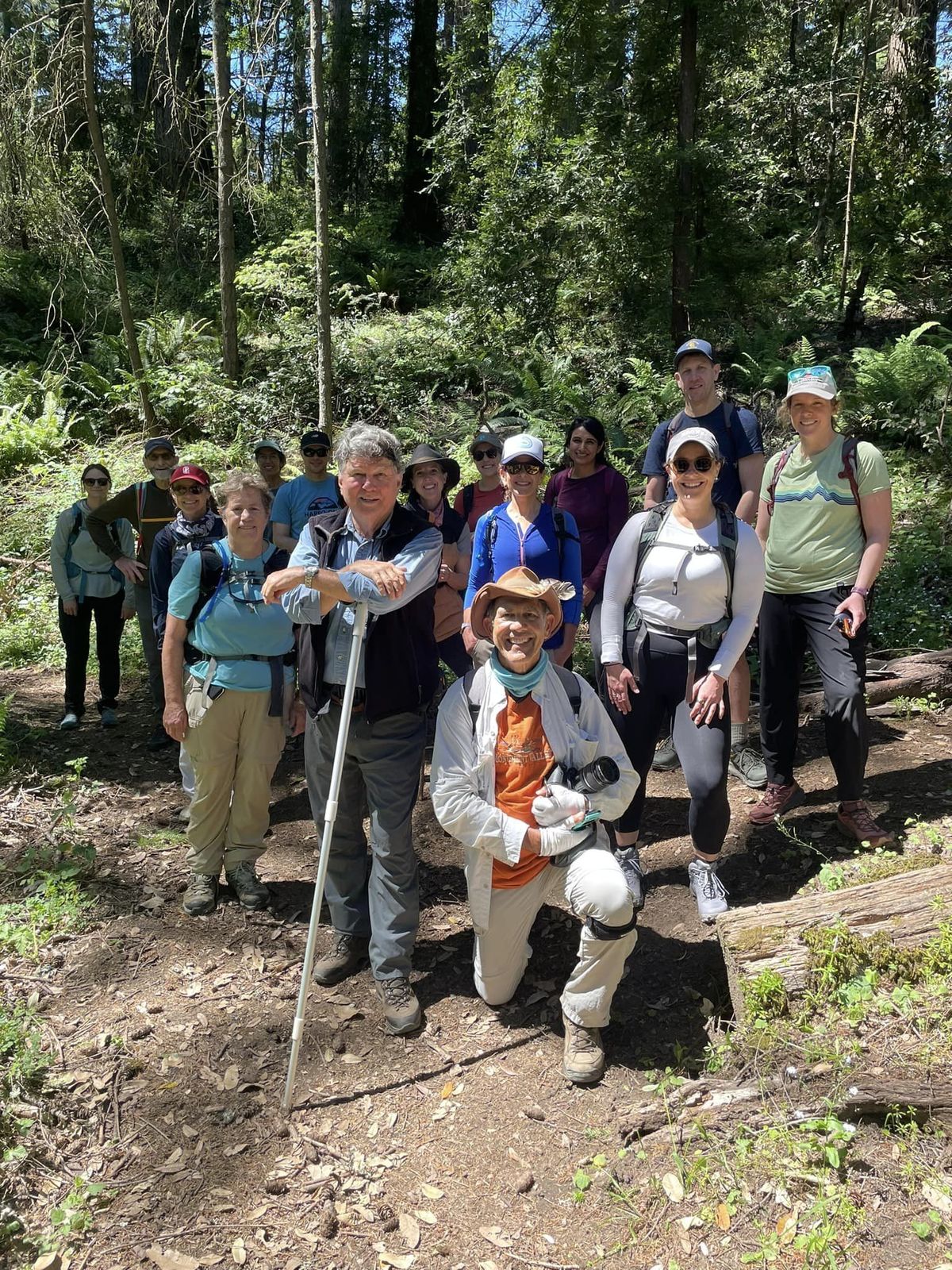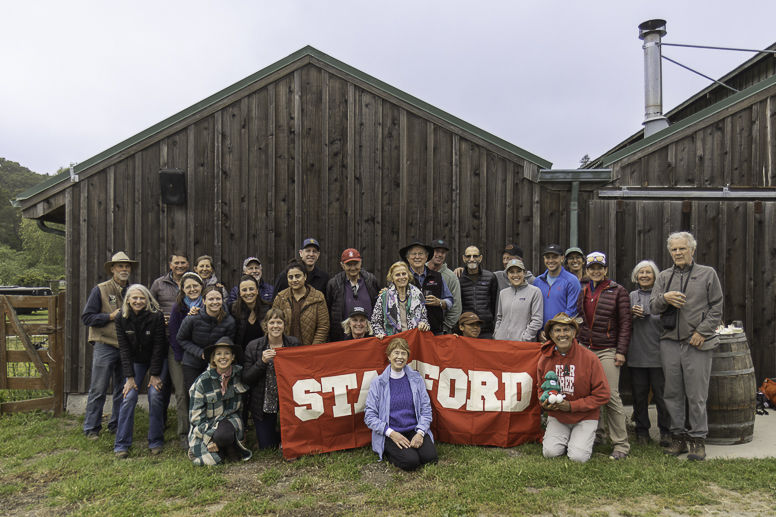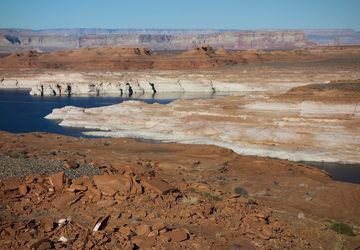On Saturday, May 21, 2023, the Bill Lane Center took a group of hikers on its annual Stanford to the Sea hike. Traditionally, the 22-mile trek winds from its starting point at Jasper Ridge Biological Preserve through Wunderlich County Park, continues along Bear Gulch Road and the Skyline Trail before moving down the Purisima trail to shuttles for San Gregorio State Beach. Recent storms required us to reroute the afternoon portion of the hike this year, but the daylong adventure was just as glorious as ever, concluding with a meal at TomKat Ranch, made possible by the generosity of Tom Steyer and Kat Taylor. Melissa De Witte, deputy director of social science communications for the Stanford News Service, has joined the hike for many years. Here, she offers her reflections on the experience, from scouting out possible trail alternatives after historic flooding this winter, to telling cringe-worthy jokes along the route with Lane Center friends and affiliates.
Stanford to where
Before the Stanford to the sea 2023 hike, there were several other Stanford to the seas* that Kate Gibson and her family and friends – including myself – tried as we figured out a new route to take hikers from Stanford’s Jasper Ridge Biological Preserve to the ocean some 20 miles away.
(*I put an asterisk here, spoiler alert: We never quite figured out the sea part of the hike)
Wildfire and storm damage caused by the extreme weather events of the past few years have closed many of the public hiking routes that would have taken us from the peaks of the Santa Cruz Mountains to the Pacific Ocean some 2,000 feet below.
So we found ourselves testing other types of Stanford to… where, exactly?
Kate and I hiked Stanford to the Fallen Tree – actually, many fallen trees: Some we crawled over, some we crawled under, some we moved, and some that had the better of us.
We hiked Stanford to the Parking Lot. We hiked Stanford to the Highway, Stanford to Speeding Cars, Stanford to Sauntering Cyclists.
We hiked Stanford to the Overflowing Creek – so overflowing that we turned around and decided to try another route back to the trail head. But we found ourselves encountering it again at a different section. It was either get soaked or retrace the 8 miles of steps we had hiked, so it became Stanford in the Overflowing Creek.
We waded through waters rushing thigh high – Ms. Gibson forged ahead – boots left on, trousers rolled up, fearless all the way while I squealed all through the crossing.
We went on trails I never hiked on in my life and trails I will never hike again in my life.
We encountered California newts guarding fire roads, their yellow and brown bodies wrapping around twigs and over stones. We saw a few banana slugs.
We got some socks soaked, and for me, wet boots that were damp for days – dried out just in time for the actual day of the hike.
***
I’m a writer for a living, and it was disorienting to not have a clear story arc – a beginning, middle and end. As a writer, a resolution is my North Star. There’s a misconception about writer's block. When people say they have it, they assume it’s because they don’t know where they should begin - but really, it’s not knowing where to end.
Without a sea for Stanford to Sea, what is our story then?
I am reminded of when I was living in New York City for grad school. A course assignment for a class I was taking was to find a body of water and write a personal essay about it. As we shared our pieces, laughing at each other's mishaps and misadventures, our professor noticed a theme emerging. What we commiserated on was the effort it took us city slickers to find - on the island of Manhattan - water to write about.
It was the journey – rather than the destination – that was our story (as a writer, I must apologize for the cliche, I’m writing this the day after the hike and I’m tired).
But Stanford to the Sea is that: It’s about the stories** we shared throughout the day and the lectures we heard from people working hard to save and study the precarious and precious environment we had the privilege of being in for the day, together in community. (** I put another asterisk here as this year, there were more Dad Jokes shared than ever before)
Yes, Ms. Gibson figured out our route - Jasper Ridge to Wunderlich to Skyline to Huddart, with a bus taking us over winding roads to Route 1 and the beach. But getting to the ocean didn’t even matter in the end. By the time we found ourselves nearing San Gregorio Beach after walking some 19 miles, the Pacific was under a blanket of wet fog and barely visible. Rather than dampen our mood, we opted to skip the scheduled stop and meet friends awaiting us with dinner and drinks for more stories, more laughs, more Dad Jokes.
And on that note, I’ll leave you this: What did the penne say to the macaroni when they were walking slowly? Go pasta! Go pasta!




